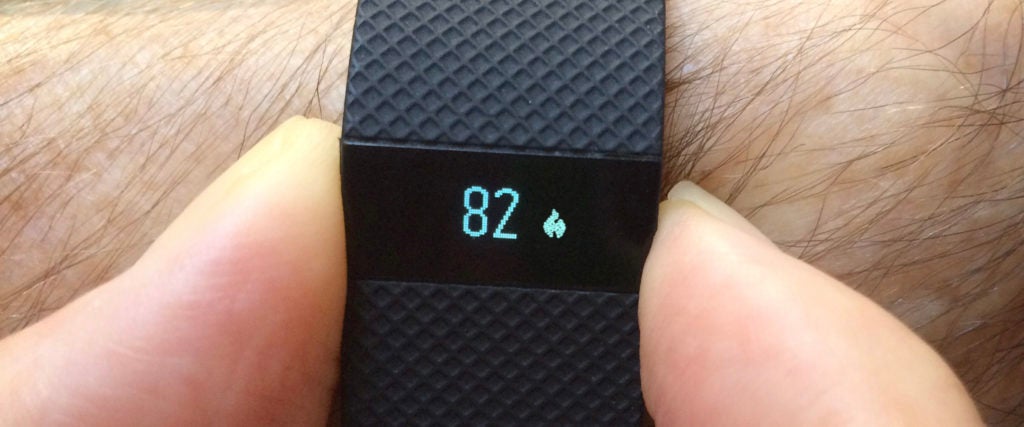The Fitbit is the foremost reason that everybody and their mother now talks about getting in 10,000 steps per day — the approximate number necessary for most people to travel five miles by foot. There is some science backing the efficacy of the 10,000-step number, and I’m certainly not prepared to dispute that claim. However, the calories-burned estimates for Fitbits and similar devices — along with the numbers posted by cardio machines themselves — are worthy of further scrutiny.
Obviously, if you’re one of those folks who locks their arms out on the stepmill and removes a massive chunk of your body weight from the calorie-burning equation, and then have the audacity to take a photo of the calorie monitor after your workout is complete and post it to Instagram like the number accurately reflects your fitness output, you already know that you’re deliberately producing a spurious result.
More to the point, however, is whether or not the calorie counter is producing a meaningful result even when you do everything correctly. When stepmills of similar step heights provide me with drastically different burned-calorie readouts despite the fact that I’m moving at the exact same pace on each machine, it leads me to suspect that the science behind the calculation is of dubious quality.
How do those calorie trackers calculate how many calories you’ve burned?
The key unit of measurement behind the calculations of most cardio machines is the MET, which stands for “metabolic equivalent of task.” All activities — from lying motionless in bed, to washing dishes, to sprinting in a kayak — have MET scores that have been assigned to them, and a formula can be used to determine the calories-burned-per-minute rate of performing that task at your personal body weight.
A MET assumes that you’re consuming 3.5 milliliters of oxygen per minute, per kilogram of bodyweight you possess, and this forms the foundation for a formula designed to help you estimate how many calories you’re burning during each moment of your life’s daily activities.
One of the inherent problems with relying on these measurements on a cardio-training device is that the machine presumes a lot of things about the person using it, and depending on how much your personal characteristics deviate from the pre-programmed average, this increases the likelihood that the burned-calorie estimate is going to be way off.
For instance, If the machine splits the difference between the heights of the average American man and woman, it may be pre-programmed to reflect that it’s being used by a person who stands 5-foot-7 and weighs 150 pounds.
With this in mind, when an elite athlete standing 6-foot-8 and weighing 250 pounds mounts the treadmill and begins running, the treadmill has no way of accounting for that drastic of a frame size difference; taller people with large frames burn more calories than shorter people with smaller frames. Moreover, muscle burns more calories than body fat on a tissue-to-tissue basis, while fitter people burn fewer calories than unfit people during the same activities. As a result, the readouts of the machines can deviate strikingly from the truth — and from one another — depending on who the baseline individual is that was programmed into it for calorie-tracking purposes.
So how does this equate to items like the Fitbit?
Fitbits and their rival devices are a little more complex than fitness machines when it comes to their calculations, but they also aren’t all that accurate. Products like the Fitbit assign values to traits like age, gender, height and weight, but still rely on pre-programmed averages to make calculations within each category. For example, like their cardio-training counterparts, these wrist-worn devices can’t factor in fitness or conditioning levels, or individual muscle mass and personal metabolism. As a result, studies have demonstrated that they can be off by as much as 93 percent in their calculations, while the Fitbit, which is generally considered the most accurate of all these devices, can still be off by an average of 27 percent.
Yikes.
Indeed. Instead of relying on your caloric-burn calculator as the arbiter of truth, it’s probably best to think of it as a baseline for comparing day-to-day differences in activity. As long as you’re relying on the same device, if it says you’ve burned 2,000 calories one day and 2,500 the next, chances are that the device correctly reflects that you burned more calories on Day Two than Day One, even if it didn’t get the numbers exactly right.
Besides, no matter what your gimmicky wristwatch says, the mirror is usually the ultimate judge. And so, this is one of those cases where your own two eyes are a much better gauge of reality than any number on a watch.

